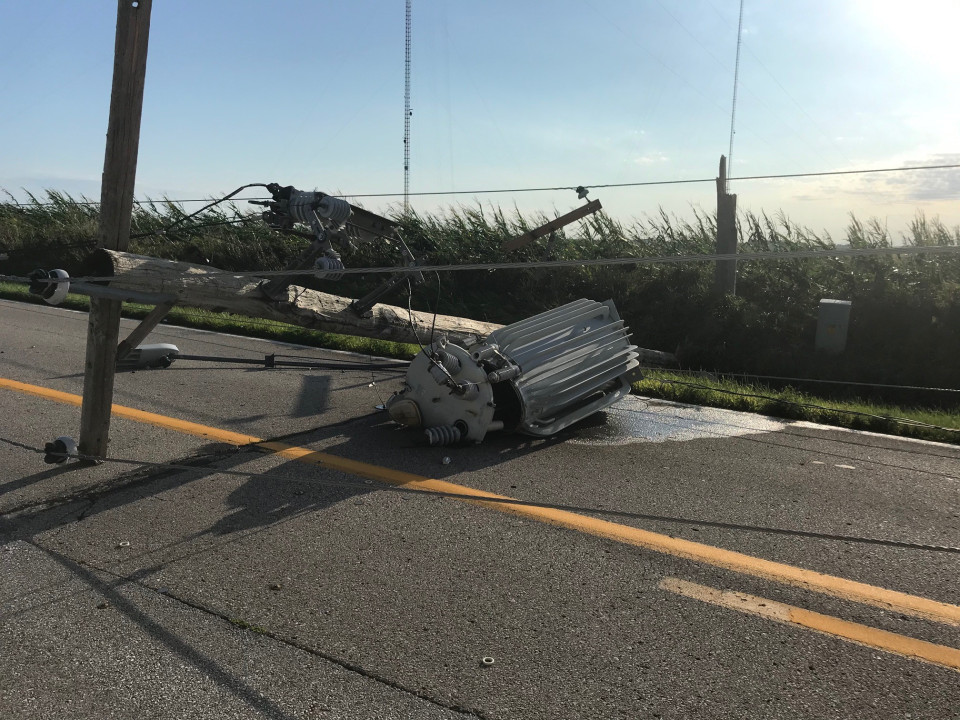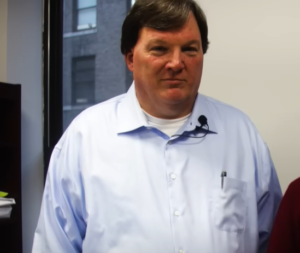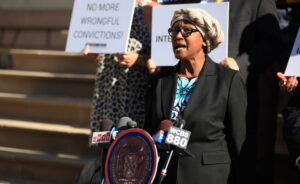
Image credit: We Are Iowa
Cedar Rapids – Iowa’s August 10 derecho seems to be getting overlooked in national news coverage, according to some Iowan reporters. These reporters, eyewitnesses to the devastation, also suggest Iowans will need significantly more help than what President Trump has promised in his emergency declarations. The Current Affairs Times spoke to several local reporters to learn about their experiences reporting on the derecho.
According to Cedar Rapids Gazette healthcare reporter Michaela Ramm, a derecho is a “land hurricane.” The term, derecho, has origins also rooted in Iowa. In 1883, University of Iowa professor Gustavus Hinrichs, first coined a ‘derecho’ as the Spanish word for ‘direct’, or ‘straight ahead’. During the most recent event, meteorologists clocked up to 140+ mph winds in some parts of the state.
Pat Rynard, founder of Iowa Starting Line, also said the derecho is a weather storm that develops quickly. The latest storm left many Iowans with only hours to prepare — wreaking havoc in the “worst natural disaster that Iowa’s ever had.”
This weather system was so unexpected that local reporters believe it took some time for the extent of the damage to sink in. The Des Moines Register estimated nearly 60,000 homes and businesses were damaged by the storm in the city of Cedar Rapids alone. Additionally, 10,000,000 acres of crops were flattened throughout the state. Overall, half a million Iowans were without power after the derecho passed through the area.
“I remember sitting there, watching it come in, and…it was like nothing I’ve ever seen before,” Michaela Ramm said. In witnessing the storm firsthand, she said “trees were toppling and the rain was sideways.”
Speaking of her frustration with the lack of widespread national news coverage, Ramm continued, “It seemed…people in Iowa were sort of screaming that this is a big deal…it was just kind of like we were yelling into the void for a couple days there.”
This frustration carries over into the political response to the derecho, as well. Six days later, Iowa’s Republican governor, Kim Reynolds, requested President Trump declare an emergency declaration for the counties of Benton, Boone, Cedar, Clinton, Dallas, Jasper, Johnson, Jones, Linn, Marshall, Muscatine, Polk, Poweshiek, Scott, Story and Tama. It’s possible that Governor Reynolds took this time to gather as much information about the damage as possible to include in her request but local reporters believe this aid may be too little too late. In fact, many residents had power restored by the time Trump issued the emergency declaration, one week after the derecho.
Although President Trump tweeted that the State of Iowa would receive all requested aid, the federal government did not provide money to restore damage to businesses and farmland.
On August 20, President Trump updated the declaration to include “grants for temporary housing and home repairs,” “low-cost” loans to cover uninsured properties, and programs to assist individuals and businesses in Linn County alone. More information can be found on the Federal Emergency Management Agency (FEMA) website.
Even though some big national names, like the New York Times, reported on the derecho; Ramm feels as though there was “very little” reporting on the derecho itself. This left local journalists trying to “scramble” and “meet the need” for information, despite local newspapers operating without power.
The day the derecho struck, the Cedar Rapids Gazette staff members found themselves in a predicament when the internet went out at their printing facility. Initially, the cellular service worked and the team was able to meet and plan their breaking news strategy in covering the dangerous storm. The team also had a generator, which they used to power five computers and team members took turns producing the newspaper.
Without internet service, the Cedar Rapids team had to rely on their Iowa City colleagues some 30 miles away for help — traveling back and forth between the two cities to put the work on thumb drives and get the stories on the page back in Cedar Rapids.
As Iowans try to return to some form of normalcy during the next few weeks, they are preparing for the worst-case scenarios. Pat Rynard of Iowa Starting Line said that tree damage in Cedar Rapids will affect the city for “decades.” Additionally, he said it could take two years for contractors to assess storm damage in nearby Marion.
“It’s so hard to demonstrate the extent of the damage through pictures or videos,” he continued. Rynard also said the damage was everywhere, so it’s difficult for people to truly understand the geographical span of this storm, even when Iowans have posted to social media. Iowan media outlets have also reported that this derecho was more damaging than the 2008 floods which garnered much more national news coverage.
The derecho hit both rural and urban communities with low-income families and refugees having little to nothing left in its aftermath. Ramm said immigrant families, who commonly live in apartment complexes and mobile homes, have “no place to go” after losing their homes. In the town of Van Horne, Iowa, Rynard said it will take five years for farm buildings to be fully restored from the storm’s damage. How will Iowans cope with this damage during harvest season, and how will the derecho affect America’s food production in the months to come?
At the time of publication, there are still over 100 households and businesses without power, and over 100 more homes have been condemned.
If you’d like to donate or share more information about Iowan relief efforts, please visit this link from the Cedar Rapids Gazette.
Image credit: We Are Iowa
Sources:
- Michaela Ramm, healthcare reporter at the Cedar Rapids Gazette
- Pat Rynard, founder of Iowa Starting Line
- “Iowa’s derecho disaster declaration does not include aid for homeowners, farmers”
- Iowa Severe Storms (DR-4557-IA)
Lead developer and editor; legal/political reporter for the Current Affairs Times. World traveler. Mac 'n' cheese lover.






